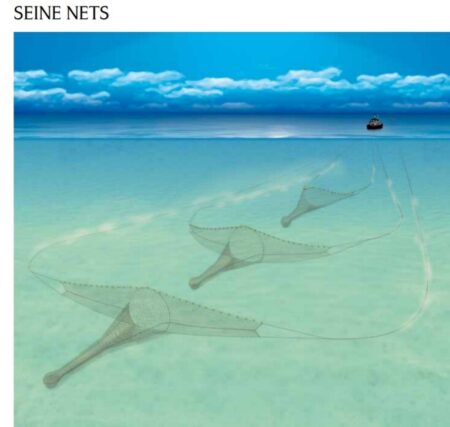
Seafish ‘SCOTTISH SEINE (Fly dragging, fly shooting) Scottish seine is a very skilful operation requiring extensive knowledge in locating fish within the grounds, accurate rigging of the gear, and consideration of tidal streams in relation to the gear throughout the shooting, towing and hauling operation. Fig 1.2 Scottish seining. The modern seine net vessel can work anything up to 14 coils of rope each side of the net. Each coil consists of 220 metres (120 fathoms) of lead cored, abrasion resistant rope, from 19mm up to 32mm diameter depending on the size of vessel. One end of the ropes is shot, with a dhan (buoy) attached. The vessel then steams round in a circular shaped course shooting one side of the ropes, one end of the net is attached to the ropes and the net shot away half way round the circle. The other side of ropes is attached to the other end of the net and they too are shot away with the vessel completing the circle close to the dhan, picking it up, leading both ropes to the winch and starting to ‘tow’ the gear. The vessel will tow until strain is on both ropes, then engage the winch to begin heaving slowly. At this stage the vessel is moving slowly ahead, the winch is used to haul the seine net ropes in, slowly at first, and speeding up as the gear is closed up. As the ropes are hauled in, the vessel will gradually start to be hauled astern towards the net even although the engine is still trying to drive the boat ahead. Once most of the ropes are hauled in, the gear is almost closed up and the net is hauled to the stern of the vessel, hauled on board and the cod-end emptied on the side deck of the boat or nowadays into a reception hopper. The gear is ready to be shot away again, and the skipper will manoeuvre the boat to the next position to shoot the gear. Each hauling and shooting routine will take about an hour and a half to three hours.’